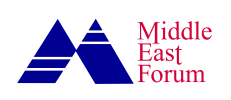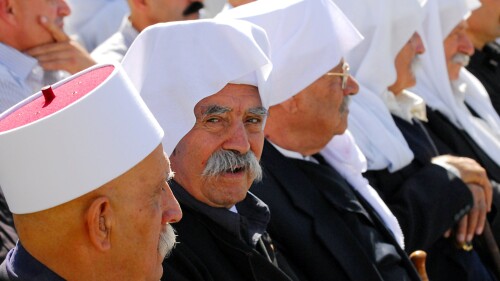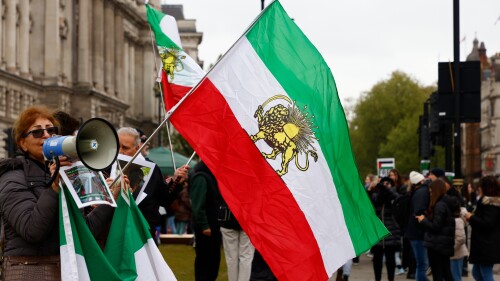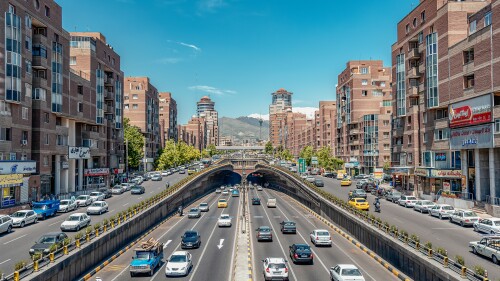Artists are often vocal about political and social issues and claim to reflect people’s will. Iran, however, increasingly appears to be an exception. A gap between Iranian people and the art community is ever more noticeable regarding political belief and performance. Iranian artists are, at best, several steps behind society and, at worst, completely detached from it.
To be fair, this misalignment is not new. Consider the 1979 Islamic Revolution: Though from an artistic point of view the Pahlavi era was a flourishing era with the Shiraz Festival of Arts in the 1970s and Farah Pahlavi’s establishment of art institutes and museums such as Tehran Museum of Contemporary Art, leftist trends influenced artists, poets, and singers from different backgrounds and led many to criticize the government. For example, Ahmad Shamlu, one of the famous figures in modern Persian poetry, was a critic of the monarchy and Gholam-Hossein Sa’edi, writer and poet, was a member of the Tudeh Party, a socialist party that attracted Soviet sympathizers hostile to the Pahlavi monarchy. Security police frequently investigated him at the time.
Too often, artists did not understand what the Islamic rule under Ayatollah Ruhollah Khomeini would mean.
Too often, artists did not understand what the Islamic rule under Ayatollah Ruhollah Khomeini would mean. Many artists who, like Shamlu, the singer Marjan, and filmmaker Dariush Mehrjui, continued criticism or did not self-censor after Khomeini’s rise quickly became victims of the revolution they once promoted. Those like Dariush Eghbali and Gholam-Hossein Sa’edi who could flee, did so, which is why Iranian art is more vibrant outside the country than inside. Today, Los Angeles is a hub for Iranian artists, particularly singers like Leila Forouhar, Ebi (Ebrahim Hamedi), and Andy (Andranik Madadian). Those who remained in Iran discovered that the grass was not always greener on the other side.
Decades of Islamic Republic rule has changed the spirit of Iran’s artistic spheres. The difference between Iran now and pre-revolutionary Iran is stark. The Iranian art community in the 1970s embraced revolutionary principles, but today many artists want to stay in power and continue the patronage they receive from the regime. To live as a painter, singer, poet, or filmmaker in Iran today requires self-censoring about principles of the regime and navigating the opportunities within the regime’s constraints. In the heady days leading up to the Islamic Revolution, many Iranians saw Khomeini as a leader who could solve the issues of all oppressed people. They believed in a utopia where Iran would be free from the world powers they labeled satanic, such as the United States and the United Kingdom. And they believed that after the revolution, they could export their so-called peaceful ideology.
Today, many artists do not share the entirety of the regime’s ideological stance, but they often fear being too vocal. After reformists gained power in the political sphere, some artists formed an alliance with them. To be able to gain power and work in Iran, they could show their dissatisfaction at times, while still displaying broad loyalty to the Islamic Republic. This is exactly what reformists want. These artists, while not fully following the Islamic law such as mandatory hijab, participated in the reformist political campaigns in the previous presidential elections, acted as their media face and convinced many to vote—even though many Iranians were hopeless about the possibility of meaningful change within the regime.
Many artists spoke about women’s rights and posted on social media opposing the morality police, but they avoided direct challenges to the regime.
True, many actors and singers will speak up when protests erupt. For example, following the murder of Mahsa Amini, which sparked the “Woman, Life, Freedom” protests, Iranians chanted slogans such as “Neither Gaza nor Lebanon; I give my life for Iran,” suggesting little interest in the Palestinian cause. At the time, many artists spoke about women’s rights and posted on social media opposing the morality police, but they avoided direct challenges to the regime. When in 2024 the Israeli Defense Forces advanced in Rafah, many of these artists joined the regime-promoted campaign “All Eyes on Rafah,” including grammy winner Shervin Hajipour. This sparked a backlash. Iranians asked the art community why they did not react with such fury when the Hamas-funding regime in Iran killed Iranian people in the streets and why they did not then demand regime change.
An incident on October 8, 2023, showed the true indifference of ordinary Iranians to events in Gaza. When the Islamic Revolutionary Guard Corps sought to hijack a soccer match between the football clubs Persepolis and Gol Gohar for the Palestinian cause, Iranians responded with the slogan “Shove that Palestinian flag up your ass!” Such divergence between artistic advocacy and ordinary Iranian attitudes highlights a growing frustration among Iranians who see artistic collaboration with reformists as a betrayal of public attitudes that have now fully turned on the regime.
Whether by choice or ignorance, artists’ collaboration with the regime today has created a fissure in which the Iranian public views artists not as an independent conscience of society but rather a fully co-opted manifestation of regime reformists who essentially wish to rescue the Islamic Republic instead of allowing it to collapse under its own weight.







